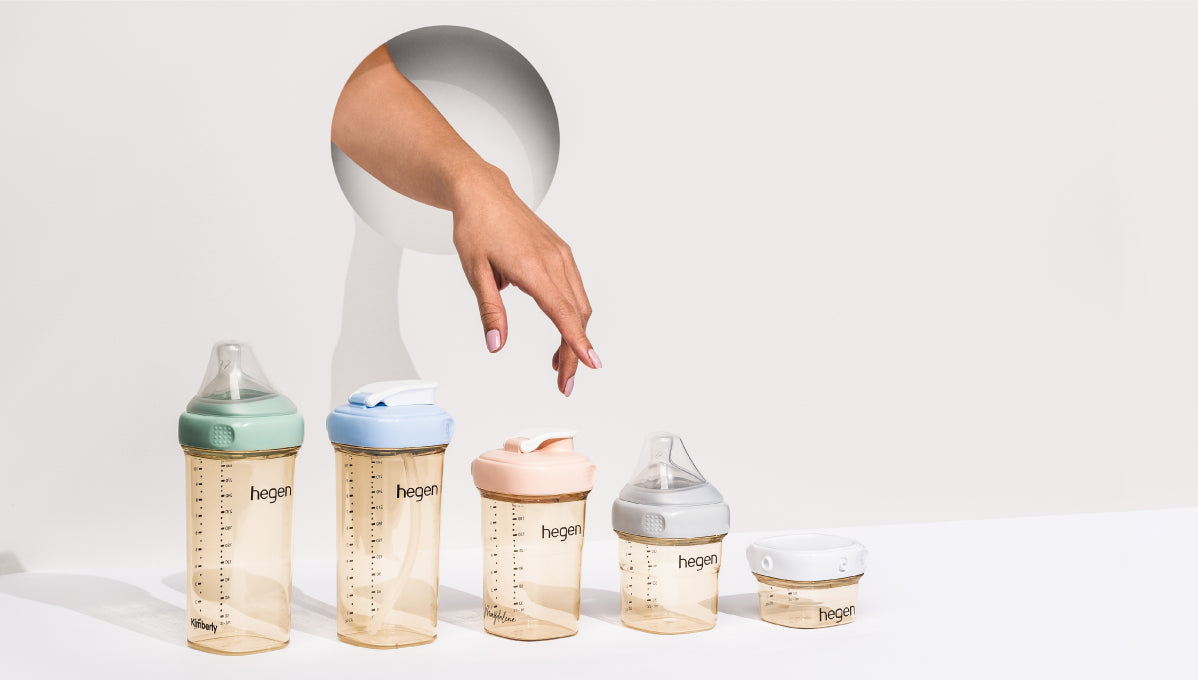Breastfeeding can sometimes feel like a chore, especially when you cannot produce enough milk during a feed or a pump session. You have probably heard about power pumping if you have searched online for ways to increase your breast milk supply. Perhaps your lactation consultant has even suggested this method when advising you on improving your breast milk production. Let us take you through and tell you what you need to know about power pumping.
What is Power Pumping?
Power pumping, also known as cluster pumping, is similar to cluster feeding your baby, where you would breastfeed more frequently in short intervals. Breast milk production is a supply-and-demand system for your body. When it senses that there may not be enough milk for your baby, it will start to produce more, increasing your breast milk yield. Power pumping triggers this natural response, effectively signalling your system to naturally create more breast milk without taking supplements or herbal remedies.
Why Try Power Pumping?
Power pumping, an intensive pumping technique, has gained recognition as an effective method for increasing milk supply in breastfeeding mothers. Incorporating a power pumping schedule into your breastfeeding routine can yield results. The concept behind power pumping is to mimic the frequent feeding patterns of a newborn, which signals the body to produce more milk. By engaging in power pumping sessions, typically lasting 60 minutes, you can stimulate milk production and encourage your body to meet the increased demand for breast milk. This technique involves alternating between periods of pumping and rest to maximise milk extraction and promote lactation.
Think of power pumping as your special helper in this wonderful journey of breastfeeding as it allows you to provide the best nourishment for your baby. Power pumping between breastfeeding sessions has shown promising outcomes, with many mothers reporting significant improvements in milk supply within just a few days. Sticking to a consistent power pumping schedule is crucial for achieving optimal results. By dedicating a short period each day to power pumping, you can boost your milk production and ensure a plentiful supply to nourish your little bundle of joy.
Sample Power Pumping Schedule
Here’s an example of a one-hour power pumping schedule you may begin with:
- Pump: 20 minutes
- Rest: 10 minutes
- Pump: 10 minutes
- Rest: 10 minutes
- Pump: 10 minutes
If you are doing a single pump, switch from one breast to another at each interval so both sides are equally stimulated. Consider an electric breast pump instead of a manual pump for convenience. The Hegen PCTO™ Double Electric Breast Pump is ideal as its flanges are designed to be comfortable and gentle on your nipples – they would not hurt even with how often you would need to power pump.
How Do I Do Power Pumping?
If you have never tried power pumping or even cluster feeding with your baby, you might feel unsure of how to start the process and do it right. The main thing you should do is to pump at intervals for about an hour or so. The great thing about this method is that there is no set time limit to follow for each interval during each session. Do some trial and error to find a routine that works best for you and your body’s system. The rule of thumb is to take a rest for every interval you pump.
Tips for Successful Power Pumping
Power pumping requires a strategic approach to maximise its benefits. Here are some tips to guide you towards joy-filled and effective power pumping sessions:
1. Establish a power pumping schedule
Set a regular power pumping schedule to train your body to produce more milk. Aim for at least one power pumping session per day, ideally at a time when your milk supply is naturally higher, such as early morning or evening. Stay committed to your schedule to see noticeable improvements in milk production.
2. Choose the right equipment
Invest in a high-quality, breast pump that suits your needs. Look for a double electric pump with adjustable suction and speed settings to mimic your baby's natural feeding pattern. A hands-free pumping bra can also be beneficial, allowing you to multitask or relax during pumping sessions.
3. Create a relaxing environment
Find a quiet, comfortable space for power pumping. Create a calming ambiance with soft lighting, relaxing music, or aromatherapy. Being in a relaxed state helps stimulate the letdown reflex, making it easier to express milk. Keep all necessary supplies, such as clean bottles, breast pads, and water for hydration, within reach to avoid interruptions.
4. Stay hydrated and nourished
Remember to keep yourself hydrated to support milk production. Drink plenty of water throughout the day and have a nutritious diet that includes foods known to boost lactation, such as oatmeal, fenugreek, and leafy greens. Consider consulting a lactation specialist or a registered dietitian for personalised advice on optimising your diet for breastfeeding.
5. Practice breast massage and compression
Before and during power pumping sessions, gently massage your breasts and use breast compression techniques. This helps stimulate milk flow and encourages better milk drainage. Massaging your breasts in a circular motion and applying gentle pressure towards the chest can enhance milk extraction and improve overall milk supply.
When to Power Pump and How Often
You can do a little power pumping if your breast milk supply is low. Some telltale signs of low milk supply are that your baby is not gaining enough weight or has fewer wet diapers. However, approach your lactation consultant to assess whether you have low breast milk supply. Those who do not have this issue should not do power pumping as it may lead to milk overproduction and engorged breasts. If you can power pump, do it once or twice daily. Be patient and always take your breaks to avoid unnecessary discomfort.
Conclusion
Power pumping appropriately can effectively increase the amount of milk you produce for your baby. Consistency with your power pumping schedules and not exceeding the number of times you do it a day is essential in keeping the breast pain away.
Pumping should be a comfortable experience. Ensure you have good-quality breast pumps and baby supplies to make the best of your pump sessions. You should attend a postnatal lactation consultation for more advice if you have any lingering concerns about power pumping, increasing breast milk supply, or other breastfeeding problems.
Here at Hegen, we offer you the ergonomic Hegen PCTO™ Double Electric Breast Pump that makes pumping effortless. We also provide postnatal consultations and other services to help you and provide comfort so you can have the best motherhood journey possible. Visit our website today to find out more about our products and services.
Disclaimer: This article is for informational purposes only and should not be considered a substitute for medical advice. Always consult with qualified healthcare professionals for personalised guidance and recommendations regarding your specific situation. They are the best source of knowledge and expertise when it comes to making decisions about your health and well-being.





